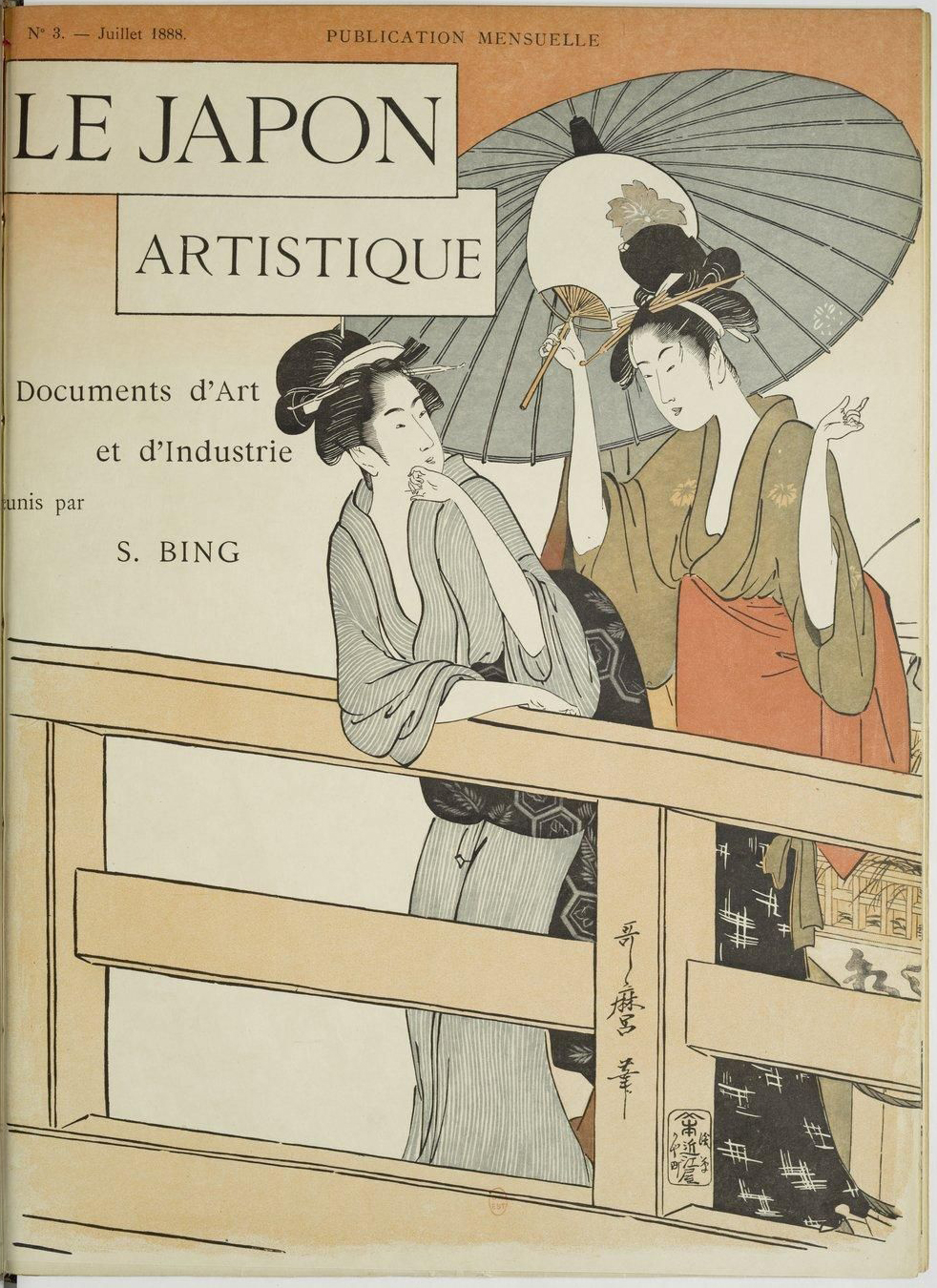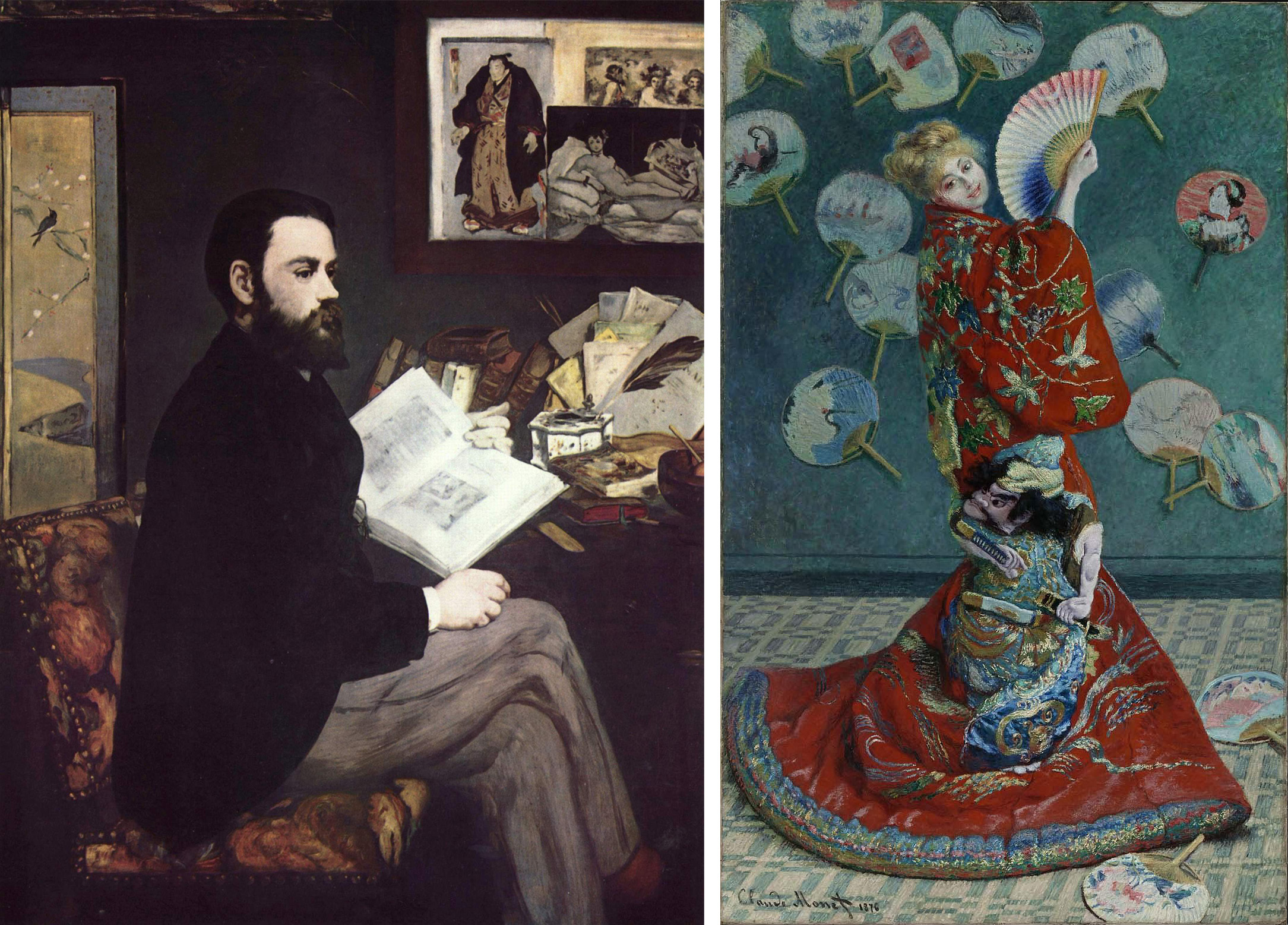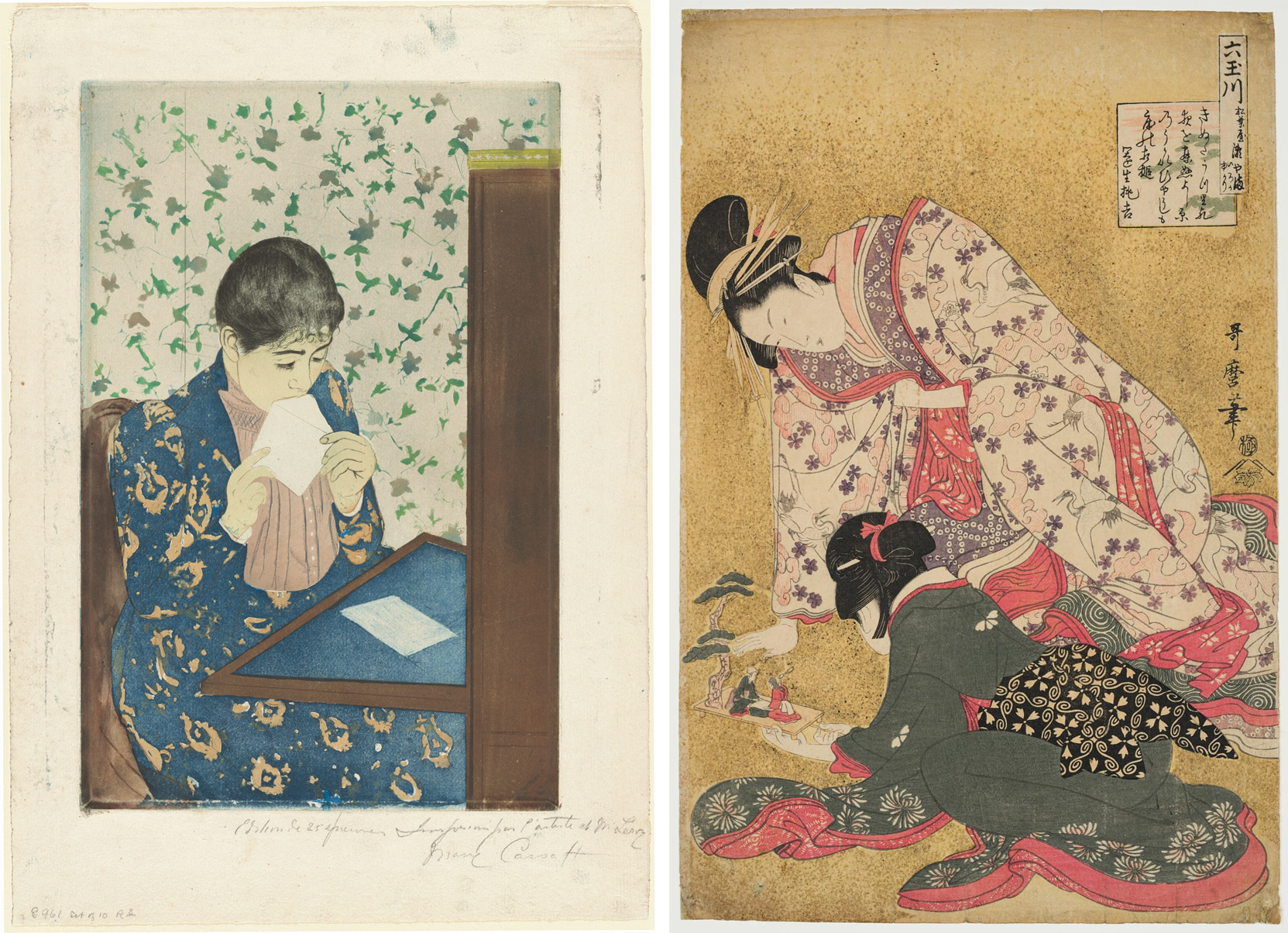Japonisme

James McNeill Whistler’s Caprice in Purple and Gold is an early example of Japonisme, a term coined by the French art critic Philippe Burty in 1872. It refers to the fashion for Japanese art in the West and the Japanese influence on Western art and design following the opening of formerly isolated Japan to world trade in 1853. In Whistler’s painting, a European woman sits on the floor wearing richly embroidered silks like those of a Japanese courtesan while she studies a set of woodblock prints by the Japanese artist Hiroshige. Decorative objects from both Japan and China surround her, including a large gold Japanese folding screen.
A decorative art fashion

The late-nineteenth century Western fascination with Japanese art directly followed earlier European fashions for Chinese and Middle Eastern decorative arts, known respectively as Chinoiserie and Turquerie. The art dealer Siegfried Bing was one of the earliest importers of Japanese decorative arts in Paris. He sold them in his shop La Porte Chinoise, as well as promoting them in his lavish magazine Le Japon Artistique, published from 1888-1891. Bing was also a major supporter of Art Nouveau a fin-de-siècle decorative style greatly influenced by Japonisme.

Works by prominent artists associated with Impressionism and Post-Impressionism bear witness to the late 19th-century fashion for Japanese art and decorative objects. In Manet’s portrait of Emile Zola the novelist and art critic sits at his overflowing desk. Immediately noticeable among the artworks surrounding him are a Japanese woodblock print of a wrestler and a Japanese gold screen. Monet portrayed his wife Camille dressed in a Japanese kimono surrounded by Japanese fans, and his water garden at Giverny was inspired by Japanese gardens depicted in prints and included a Japanese-style wooden bridge. In addition to painting copies of several Japanese woodblock prints, such as Bridge in the Rain (After Hiroshige), Vincent van Gogh depicted them in the background of several portraits.

A source for modern artists
Japonisme coincided with modern art’s radical upending of the Western artistic tradition and had significant effects on Western painting and printmaking. Japanese woodblock prints called ukiyo-e, or “pictures of the floating world,” were a cheap popular art form in Japan during the Edo Period (1615-1868). Ukiyo-e prints first appeared in Europe as packaging material used to protect valuable imported porcelain objects, but they attracted the interest of European artists and art collectors and were soon imported for their own sake.
Impressionism

The Impressionists were also interested in Japanese prints. After visiting an 1890 exhibition of ukiyo-e prints in Paris, Mary Cassatt employed similar decorative patterns, flattened spaces and simplified figures in a series of color etchings that includes The Letter. Cassatt’s favored subjects, women in domestic interiors playing with children or grooming themselves, were common in ukiyo-e prints, a fact that undoubtedly contributed to her interest in them.

Cassatt’s friend Edgar Degas used Japanese compositional devices to depict women bathing. In The Tub a woman sponging her neck is shown from an elevated vantage point that emphasizes the flat shapes and patterns created by her body and the surrounding objects. The curve of the tub is continued in the woman’s back, while the vertical of her left arm parallels the edge of the shelf on the right side of the painting. Thus, although Degas uses traditional chiaroscuro shading to define three-dimensional forms, abstract pattern and surface design dominate the image, flattening the space and rendering it ambiguous.
Like Degas’ The Tub, Kunisada’s Chrysanthemum shows a bathing woman surrounded by ordinary household objects — note the water heater and scrub brush in the upper right corner. Although the viewing angle is not as high as that in Degas’ work, we see the woman from above, and Kunisada uses the space and objects surrounding her to construct a visual frame for the figure rather than clearly defining an interior space. The repetition of colors and simplified shapes creates a strong surface pattern, as does the lack of chiaroscuro shading.
Post-Impressionism

Among the Post-Impressionists, van Gogh was especially passionate about Japanese art and traditions, although his understanding of Japanese culture was limited and often more personal fantasy than based on real knowledge. He amassed a collection of hundreds of Japanese prints, and they influenced the development of his style, notably his vivid colors, simplified planar forms, and use of decorative surface patterns. In 1888 he wrote his brother Theo, “All my work is based to some extent on Japanese art . . ..”[1]
- Dr. Charles Cramer and Dr. Kim Grant, "Japonisme," in Smarthistory, June 14, 2020, https://smarthistory.org/japonisme/ ↵

